Rob Vollmar's Blog, page 2
September 3, 2016
Interlude - By Way of Explanation
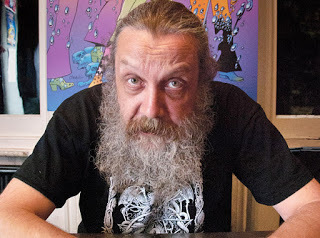 Living British writer Alan MooreGreetings all! I hate doing posts about not posting but I figured after nearly two months radio silence that an explanation was in order. In mid-July, I secured an opportunity to interview British writer, Alan Moore, for World Literature Today magazine, of which I am the book review editor. He has a new book, Jerusalem, that is dropping very, very soon.
Living British writer Alan MooreGreetings all! I hate doing posts about not posting but I figured after nearly two months radio silence that an explanation was in order. In mid-July, I secured an opportunity to interview British writer, Alan Moore, for World Literature Today magazine, of which I am the book review editor. He has a new book, Jerusalem, that is dropping very, very soon.It's 1300 pages long.
Moore is, far and away, my favorite living writer and gaining the opportunity to interview him is the achievement of a life-long goal. I had one month to read this life-altering but very long book and prepare questions for an author who has been an inspiration to me for more than 20 years.
The good news is I finished the book and conducted the interview on August 25th. I think it went very well and, Lord willing and if the Creeks don't rise, it'll be in the January issue of the magazine. There are some interesting (and not altogether obvious) correlations between Hardy and Moore's works that will be obliquely addressed in the piece so, when the time comes, I'll share it here along with my thoughts on what elements, textual and otherwise, link them in my mind.
The bad news is/was that there was no way I could meet those goals and work on this blog. Now that it's behind me, I'm going to get started again here very soon. I actually am in the process of reviewing Under the Greenwood Tree and my original notes to get back into the headspace to write about it.
In the meantime, I thought I'd share a Hardy poem with which you may not be familiar. I was gifted two books of Hardy criticism from a friend's library and, inside of them, was a Hardy poem cut out of a magazine of unknown origin (though the photography in an ad on the back side suggests early 1960s). This poem, "The Unplanted Primrose," is dated 1865-1867 and, according to the tiny text at the bottom, was "discovered by Miss Evelyn Hardy [ed. note, noted Hardy critic but, as far as I can tell, no relation] among the unpublished papers of Thomas Hardy." I've only spotted it online embedded in longer papers and books so why not reprint it here for your enjoyment?
The Unplanted Primrose
"A pink primrose from the plant he knows
Let me send him in his far spot,
From the root I brought to his garden-knot
When he dwelt herefrom but a little mile;
A root I had reared at that time of love,
And of all my stock the best that throve
Which he took with so warm a smile."
Such she sang and said, and aflush she sped
To her love's old home hard by
Ere he left that nook for the wider sky
Of a southern country unassayed.
And she crept to the border of early stocks,
Of pansies, pinks and hollyhocks,
Where their vows and the gift were made.
"It has not bloomed!" And her glances gloomed
As she missed the expected hue,
"Yet the rest are in blow the border through;
Nor is leaf or bud of it evident.
Ah, can it have died of an over-care
In its tendance, sprung of his charge to spare
No pains for its nourishment?"
She turned her round from the wrong ones found
To the seat where a year before
She had brought it him as the best of her store,
And lo, on a ledge of the wall she neared,
Lay its withered skeleton, dry and brown,
Untouched since there he had laid it down
When she waved and disappeared.
1865-1867 Westbourne Park Villas
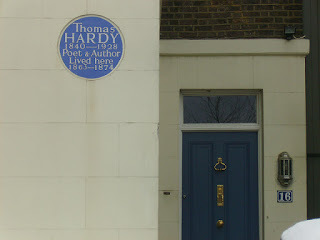 16 Westbourne Park Villas, W2, London
16 Westbourne Park Villas, W2, Londonwhere the poem was written.
Published on September 03, 2016 19:06
July 10, 2016
Under the Greenwood Tree Part 1 - Going Dutch
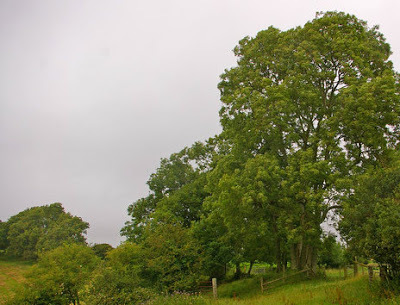 A tree at the junction of the North & South Warren Hills
A tree at the junction of the North & South Warren Hills outside of Beaminster, Dorset. Photo by Graham Horn (2008)Thomas Hardy's second published novel, Under the Greenwood Tree, bears the curious subtitle of "The Mellstock Quire: A Rural Painting of the Dutch School." It's easy to overlook this as an authorial eccentricity but, as it turns out, heeding it is of vital importance in the task of enjoying this novel for what it is, rather than what it half-heartedly pretends to be.
During Hardy's extended stay in London (beginning in 1860), he tried on a number of creative hats above and beyond his work as an architect's assistant, including that of an art critic, though he probably would have thought of it more as art journalism. He spent many hours in the museums of London studying the work of the great master painters, developing an eye to perceive what techniques could be used to achieve what ends as well as a language to articulate what he saw. Indeed, many of Hardy's novels rely a kind of painterly language to describe landscapes and scenery in particular and imbue those descriptions with a poetic register more often reserved for feelings or people in other novelists' work.
So when Thomas Hardy says that he's writing something as "A Rural Painting of the Dutch School," it behooves us to take that seriously as he, no doubt, did in proclaiming it. I am not an art expert so I'm drawing from ideas that can be gleaned from a Wikipedia article and a couple of YouTube tutorials. I have no doubt that Hardy may have found more levels on which to weld his rural idyll to the conceptual framework of Dutch painting but here are the ones that pertain most obviously to Under the Greenwood Tree.
The first is precision in detail. If Desperate Remedies offered a hint at Hardy's future gift for describing people, places and things, it is Greenwood Tree where this impulse sees it first full expression. We'll be looking in particular at how Hardy uses his descriptions to compose a kind of emotional soundtrack to lay beneath his rather simple plot that gives it more heft.
Second, painters in the Dutch school are remembered for their choice of subject matter, elevating the lower above the greater. They liked to paint landscapes with no people in them. They selected more mundane items to foreground in their compositions. The working class became the subject of their portraits in lieu of dignitaries.
I believe that this applies to Greenwood in two different ways. First, this is a story about simple Dorset folks of limited social importance in the grand scheme . The most elevated characters in the book (Geoffrey Day, Fred Shiner and Parson Maybold) are a land steward (like Manston in Desperate Remedies), a farmer and a clergyman respectively. The novel's primary energies are tasked with recreating the complex social web that exists among Dorset folk, which brings me to my third and final point.
The love story which drives Under the Greenwood Tree's plot serves only as a frame to dictate the span of Hardy's panoramic sketch of the rural life in which he'd grown up. This is a secondary inversion of the "lower above the higher" variety as the setting and supporting characters are the genuine subjects of this portrait. As a result, the main characters are only broadly sketched and offer little in the way of depth to examine except for the dimensions in which they relate to the explication of the social systems of which they are a part. I do think there is one macabre implication in the plot worthy of mention as it is so classically Hardy so we'll explore that a little as well.
Photo Credit - By Graham Horn, CC BY-SA 2.0, https://commons.wikimedia.org/w/index...
Published on July 10, 2016 20:10
July 4, 2016
Writing Under the Greenwood Tree
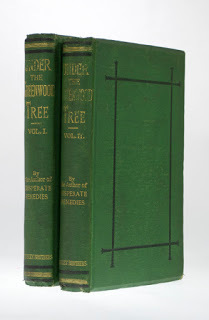 The original two-volume edition
The original two-volume editionof Under the Greenwood Tree from
the Tinsley Brothers publishing house.There is an apocryphal story about filmmaker Quentin Tarantino suggesting that he arrived in Los Angeles with one movie in his mind to make, but it was so sprawling that he couldn't convince anyone that it was filmable. In time, that one movie morphed into a string of films that formed the bedrock of his legacy: Natural Born Killers, True Romance, Pulp Fiction and Reservoir Dogs.
In the same manner, Thomas Hardy's unpublished The Poor Man and the Lady served as the springboard for several of Hardy's early novels including the first published under his own name, Under the Greenwood Tree. It is a testament to what a beast of novel Poor Man must have been that both Desperate Remedies and Under the Greenwood Tree are supposed to contain large swaths of material from it but could not be more distant from one another in tone, focus and execution. Indeed, Hardy claimed to have begun Greenwood before abandoning it for what must have seemed like a more commercially viable approach to the plot-driven Remedies.
Desperate Remedies had been neither the resounding hit nor unmitigated failure that might have given Hardy a clear sign of what to do next. He had earned only about two-thirds of his initial investment in the book back, despite some positive reviews in conspicuous places. He began the process of placing his second novel in August of 1871 with the same publisher where he began, with Macmillan, offering Under the Greenwood Tree as a novel which built upon the positive feedback he'd gotten from readers about his ability to portray rural life in a convincing manner. Hardy steers its plot (such as it is) studiously away from any questions of moral impropriety that might have alienated Macmillan from publishing Poor Man.
Under the Greenwood Tree's length (or lack thereof) proved to be an impediment in selling Macmillan on it as a publishable property. As the novel publishing business in England at the time was built on a model of books of a particular length (the three-volume model), moving something other than that may have been a privilege afforded to those who had proven their ability to attract an audience, which Hardy had not. It also lacks a certain narrative heft in the pages it does fill that may have made it seem even more slight than it was by page count.
Though Hardy was encouraged by their willingness to correspond with him on the possibility of publishing it, he was sufficiently convinced of their lack of interest in publishing it by October of that same year to begin seeking out other options. He crafted a letter to William Tinsley. who had published Desperate Remedies, alerting them to a favorable late review (penned by his friend Horace Moule) and dangling the possibility of two other novels, Under the Greenwood Tree and the not-yet written A Pair of Blue Eyes. Tinsley showed alternate moods of interest and disinterest in taking on Hardy's next novel until April of 1872, when Tinsley offered Hardy £30 for the copyright of the novel.
It behooves us to remark on the slow transition taking place in the publishing industry at that time, one that reflected the growing power of individual authors in relation to the publishing companies that brought their works to market. Hardy had availed himself of the less attractive of the two choices of the old paradigm, paying Tinsley a £75 guarantee against the publication of Desperate Remedies. This offer represented the other, guaranteeing Hardy £30 profit on the sale of his second novel but at the expense of his control over the work unto perpetuity. Before long, the industry would move towards the payment of royalties in exchange for temporary control of the copyright. This benefitted publisher and author alike as it lowered the non-manufacturing costs associated with publishing a book from a popular author (ie the advance) while guaranteeing a longer-term source of income (if the book were successful) to its author. These are the terms by which Hardy eventually would be able to make a living as a writer of novels but those days were yet some years in the future.
And so, desperate to build on whatever momentum he had accrued through the publication of Desperate Remedies, Thomas Hardy signed away the rights to his second novel to Tinsley in April of 1872 and the two-volume edition was published in June of that same year. It was the only novel for which he was never able to buy back the rights to regain control of the copyright.
Published on July 04, 2016 12:06
June 18, 2016
Another Milestone!
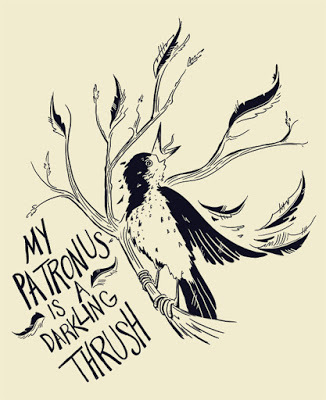 Illustration by Shayna Pond (2016) for JLS
Illustration by Shayna Pond (2016) for JLSPlease cite artist and blog if you reuse.I didn't have much opportunity to write for the blog this week as I had a big show this week opening a local blues/jazz festival. I'm reading Under the Greenwood Tree and a couple of other Hardy-related titles right now but I don't have anything specific upon which to report yet.
In the meantime, the flurry of activity at the end of our discussion of Desperate Remedies pushed the all-time page views up over 15,000 since March.
I want to celebrate these little victories while acknowledging that these big bumps in views happen when the good folks at the Thomas Hardy Facebook page share one of my posts (in this case DR Part 7) with their nearly 200K followers. That post was viewed more than 3,500 times, while the majority of my organically supported posts (such as my recent review of Arthur Mee's Dorset) are usually viewed by somewhere between 50 and 80 people.
Call me simple but the fact that somewhere between 50 and 80 people take the time out of their day to exercise their enthusiasm for Thomas Hardy's writing by reading this blog thrills me. I've found pockets of wonderfully sociable Hardy readers at the Thomas Hardy Fans FB page and Goodreads who have given me lots of support and feedback and it means a lot to me. Thanks to all of you - friends, family, strangers alike - who stop in to follow along.
I'd like to give a final shout-out to my wife, Shayna, who has graced this blog with several outstanding illustrations, including the one attached to this post. She made that one for me for a one-of-a-kind t-shirt [editor's note: said t-shirt and the illustration which adorns it was a wedding anniversary gift] which should arrive later this month. I'm going to make the shout-out extra loud because I groused at her literally this moment for asking me about another obligation I had made freely but had yet to fulfill. And then she brought me some iced tea. She's wonderful and I am still a project under improvement.
Thanks, y'all.
Published on June 18, 2016 13:25
June 12, 2016
Review: The King's England (Dorset) by Arthur Mee
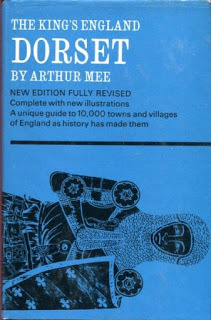 The King's England: Dorset is a quaint book that offers an exhaustive survey of the towns and accompanying landmarks of Dorset as they stood in 1939. The author, Arthur Mee, wrote a series of these books, covering all the counties in England, and this one, published just over a decade after Hardy's death, is written through a filter of identifying landmarks that might appeal specifically to admirers of TH's work.
The King's England: Dorset is a quaint book that offers an exhaustive survey of the towns and accompanying landmarks of Dorset as they stood in 1939. The author, Arthur Mee, wrote a series of these books, covering all the counties in England, and this one, published just over a decade after Hardy's death, is written through a filter of identifying landmarks that might appeal specifically to admirers of TH's work.As one might expect, there is a LOT in here about the churches that serve as the anchor for most, if not all, of these towns but geography and history are given a fair amount of consideration as well. Mee focuses a lot of his description on delineating the layers of pre-Roman, Roman, Saxon, Norman and British influence on the architecture that really drives home how long these lands have been occupied.
There is a somber tone that underpins this book as one is regularly reminded of the trouble brewing in Europe as it is being written and published and it's hard not to read a "We better document this while it exists" subtext into it. This proved to be true, though not as apocalyptically as Mee might have feared, as later editions of the London volume had to be extensively re-written and broken into multiple volumes to accommodate the rebuilding after the bombing of the Second World War.
Judging solely from the Dorset edition, I enjoyed reading Mee's writing. He's not afraid to take an opinion or pass a judgment on an historical event or person and it feels like something written by a person and not a tourism board. His writing is, on occasion, lyrical and always thorough. The survey as a whole is undermined by the alphabetical listing of the towns, which makes the continuity of geographic proximity tougher to parse than it should be.
There are plenty of nods to Hardy and the many roles Dorset plays in his work to satisfy those who might consider this volume as a reference to their own interest in the West Country's favorite son.
Published on June 12, 2016 15:33
June 8, 2016
Desperate Remedies Part 8 - The Verdict
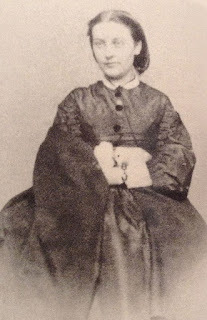 Eliza Bright Nicholls,
Eliza Bright Nicholls, the inspiration for Cytherea Graye?
Photo from the Beinecke Rare Book
and Manuscript Library, Yale UniversityAs we close the back cover on our examination of Thomas Hardy's first novel, Desperate Remedies, I want to take a quick look at what elements of the book were reflections of people and places in his real life.
Millgate points out in his Hardy biography that Cytherea Graye was based, at least in aspect, upon Eliza Nicholls, the elder of the two Nicholls sisters with whom Hardy had a long-standing "agreement" that did not end in marriage. However, it is very tempting to read some of his own sister, Mary Hardy into the character as well. She was visiting Hardy regularly in Weymouth during the time he was writing The Poor Man and the Lady, which would be cannibalized to some degree or another to create Remedies. The strong bond between Hardy and his sister can also be seen in the relationship between Cytherea and her brother, Owen.
Speaking of Owen, Hardy acknowledged that he had modeled that character upon himself but, when asked about Edward Springrove, he coyly responded that the character was modeled upon someone he met while working in the architectural office in Weymouth. I think it's pretty plain that Edward, an architect of limited means who was tangled up in a long-standing engagement he did not wish to fulfill and had literary aspirations, was also based on Hardy. The two characters (Owen and Edward) become very difficult to tell apart from one another, especially later in the novel when they are working together to prove Manston's guilt. Owen represented Hardy as he saw himself with Edward representing the soulful young architect who aspired to be a writer. To Hardy's credit, he lived out that aspiration more successfully than I imagine even he could have hoped.
Where shall we look to find the inspiration for our two more tortured characters, Miss Aldclyffe and Aeneas Manston? Those characters, I suspect, were mostly invented for the sake of the story. One could point to Julia Martin, the woman of some means who took a shine to Thomas when he was a boy and from whom he was separated by a feud she got into with Jemima Hardy over his education. Hardy infuses Miss Aldclyffe with a surprising degree of sensual energy for the role she plays in the book and she would have been of just the right age when he knew her best to serve as the eventual model for this dark maternal figure. As for Manston, there is no one adequately Byronic enough from Hardy's life prior to the writing of Remedies to have been the direct inspiration. Again, one might be tempted to consider Horace Moule but given Moule's known predilection for young men, it's just a poor fit.
Thomas Hardy's body of novels (and to some extent his poems) are known for their shared geography, the fictional Wessex standing in for the county of Dorset. While Hardy certainly drew upon familiar places to make the locations in Desperate Remedies seem real, he didn't imbue them with the same careful attention to detail that he would in later books. In fact, the Wessex towns that appear in Remedies didn't even bear the names that line up our current editions of the novels with the other Wessex novels in his body of work. He changed them later to import them into his Wessex universe.
Of the places that appear in the novel, only Budmouth (a stand in for the coastal city of Weymouth) comes across as a Wessex city proper. Hardy's inclusion of incidental details that he experienced while living there (and while writing the early draft of The Poor Man and the Lady) like boating and dancing probably have more to do with his trying to draw from lived experiences to give the novel a ring of authenticity. Otherwise, cities don't play the defining role that we'll see in later books.
In closing our examination of Desperate Remedies, I'd like to offer a few broad assessments of it that the reader might take away. Most importantly, it's a pretty good book, especially for a first published work. Several of the characters transcend their function in the twisting plot and inspire a degree of pathos from their suffering, not the least of which being the supposed villain, Aeneas Manston. Hardy's natural gifts for prose leavened by a poetic tone elevates important moments and even sections of the book unmistakably out of the pure genre fiction it is intended to be and up towards something resembling literature.
The book suffers to an extent from being overlong. There are sections, mostly towards the end, where it feels as if we are being asked to tread water in order to satisfy the structural expectations of the audience. The social aspects of the novel feel more successful but the suspenseful elements are leaned upon more heavily to justify the plot. The result is, at worst, mildly diffuse.
For this reader, though, the good in this novel outweighs the bad by a margin of about two-to-one and, on whatever plane we feel the need to record a success or a failure in regards to a work of art, Hardy notched a 'W' on his first published novel.
Published on June 08, 2016 08:13
June 5, 2016
Desperate Remedies Part 7 - Let's Get Physical
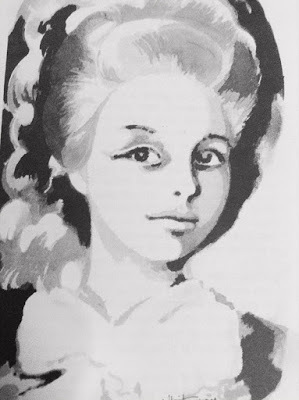 Cytherea Graye, as illustrated by Peter Whiteman for the
Cytherea Graye, as illustrated by Peter Whiteman for theHeron Books edition of Desperate Remedies (1977)Thomas Hardy is known for bringing a thrilling kind of poetry to his physical descriptions and Desperate Remedies is no exception. While the social and suspenseful elements of the plot may group it with or set it apart from other novels he's written, Hardy's attention to detail and his ability to wring emotional value out of the delivery of those details are the elements perhaps most universal to what is great in his writing.
The bedrock of this gift lies in his descriptions of the characters that inhabit his work. The more important that a character is, the more lavish the description he affords. Moreover, Hardy has a particular knack for tying something essential about the character into that description using interesting metaphors or other rhetorical devices.
In the opening of the plot proper, he describes Cytherea Graye, noting that "[her] face was exceedingly attractive, though artistically less perfect than her figure, which approached unusually near the standard of faultlessness." Later, he describes her hair as "resting upon her shoulders in curls" and "of a shining corn yellow in the high lights, deepening to a definite nut-brown as each curl wound round into the shade." Her eyes are "of a sapphire hue" as well as possessing "the affectionate and liquid sparkle of loyalty and good faith as distinguishable from that harder brightness which seems to express faithfulness only to the object confronting them."
We are treated to the first description of her beau, Edward Springrove through Cytherea's eyes. She notes him as being "above her brother's height" and "although the upper part of his face and head were handsomely formed, and bounded by lines of sufficiently masculine regularity, his brows were somewhat too softly arched, and finely pencilled for one of his sex." The sum effect suggested to her that "though they [his features] did not prove that the man who thought inside them would do much in the world, men who had done most of all had had no better ones."
Hardy's description of the misunderstood villain of the piece, Aeneas Manston, is perhaps his most sensual and detailed of the book.
He was an extremely handsome man, well-formed, and well-dressed, of an age which seemed to be two or three years less than thirty. The most striking point in his appearance was the wonderful, almost preternatural, clearness of his complexion. There was not a blemish or speck of any kind to mar the smoothness of its surface or the beauty of its hue. Next, his forehead was square and broad, his brows straight and firm, his eyes penetrating and clear...Eyes and forehead both would have expressed keenness of intellect too severely to be pleasing, had their force not been counteracted by the lines and tone of the lips. These were full and luscious to a surprising degree, possessing a woman-like softness of curve, and a ruby redness so intense, as to testify strongly to much susceptibility of heart where feminine beauty was concerned...
His manner was rather elegant than good; his speech well-finished and unconstrained.
In all three cases, Hardy begins with the physical but then credibly extends his observations into the more intangible elements of character to let the reader know what they can expect from each player moving forward into the story.
Another highlight of Hardy's descriptive passages are those of buildings and structures. By his own admission, Hardy rarely invented these structures of whole cloth but often pulled them from places he'd lived, visited or studied on his own aborted journey toward becoming an architect. He spoke the language of structural design and, at times, could have been reading aloud from a blueprint. He describes Knapwater House (Miss Aldclyffe's home) as "regularly and substantially built of clean grey freestone throughout...the main block approximated to a square on the ground plan, having a projection in the center of each side, surmounted by a pediment. From each angle of the inferior side ran a line of buildings lower than the rest, turning inwards again at their further end, and forming within them a spacious open court, within which resounded an echo of astonishing clearness."
The steward's house is described by Manston himself, again using the voice of an architect to demonstrate Hardy's own fluency in the language of design.
'Here, you see, they have made a door through; here, they have put a partition dividing the old hall in two, one part is now my parlour; there they have put a plaster ceiling, hiding the old chestnut-carved roof because it was too high and would have been chilly for me; you see, being the original hall, it was open right up to the top; and here the lord of the manor and his retainers used to meet and be merry by the light from the monstrous fire which shone out from that monstrous fire-place, now narrowed to a mere nothing for my grate, though you could see the old outline still.'
For all the depth that his description of people and structures brings to Hardy's novels, it is, of course, his descriptions of natural phenomena that often elevate his writing into the poetic register. Like the Impressionists painters, Hardy describes nuance in the interplay of light and shadow that might be lost on a less observant eye, as in this passage: "It was just that stage in the slow decline of the summer days, when the deep, dark, and vacuous hot-weather shadows are beginning to be replaced by blue ones that have a surface and substance to the eye."
Or this painterly description of a "heathery valley":
The wide concave which lay at the back of the hill in this direction was blazing with the western light, adding an orange tint to the vivid purple of the heather, now at the very climax of bloom, and free from the slightest touch of the invidious brown that so soon creeps into shades. The light so intensified the colours that they seemed to stand above the surface of the earth and float in mid-air like an exhalation of red.
His observations are also not limited to the visual dimension but can cross senses with a dizzying facility, as when he is describing Cytherea's long first night at Knapwater House.
Her ears became aware of a strange and gloomy murmur.
She recognized it: it was the gushing of the waterfall, faint and low, brought from its source to the unwonted distance of the House by a faint breeze which made it distinct and recognizable by reason of the utter absence of all disturbing sounds...She began to fancy what the waterfall must be like at that hour, under the trees in the ghostly moonlight. Black at the head, and over the surface of the deep cold hold into which it fell; white and frothy at the fall; black and white, like a pall and its border; sad everywhere.
These kinds of poetic flourishes can be found peppered throughout Desperate Remedies, sometimes to set a scene, often to set a mood or reinforce a theme or, in masterful confluences which manage both aims. Hardy opens this passage with a sly quotation from Tennyson's "A Dream of Fair Women" before completing the image with his own imaginative verbal sketch.
'The tearful glimmer of the languid dawn' was just sufficient to reveal to them the melancholy red leaves, lying thickly in the channels by the roadside, ever and anon loudly tapped on by heavy drops of water, which the boughs above had collected from the foggy air.
(That is my favorite sentence in the book!)
Published on June 05, 2016 19:29
June 3, 2016
Desperate Remedies Part 6 - Everything Falls Apart
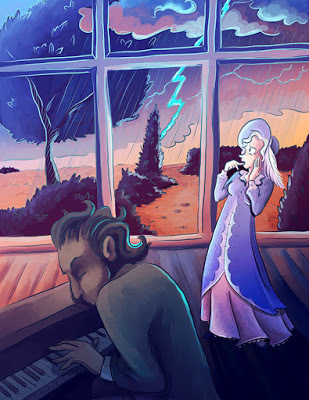 After the wedding that was left unconsummated, Desperate Remedies slips into a torpor. The overarching theme is one of limbo: Cytherea in a half-married, half-unmarried state; Edward unable to advance his cause do to the debt incurred from the inn's burning; Manston searching for a wife recently presumed dead; Miss Aldclyffe receding from the story as a whole.
After the wedding that was left unconsummated, Desperate Remedies slips into a torpor. The overarching theme is one of limbo: Cytherea in a half-married, half-unmarried state; Edward unable to advance his cause do to the debt incurred from the inn's burning; Manston searching for a wife recently presumed dead; Miss Aldclyffe receding from the story as a whole. Manston does his due diligence (though he is near fixated on Cytherea) and places advertisements encouraging his wife to return. After the third advertisement, Manston receives a letter from his estranged wife and she returns, moving into his steward's quarters at Knapwater House as was the original plan. Cytherea and Owen move to a nearby town while she recovers from an illness brought about by the stress of her situation.
It is this point in the book (about two-thirds of the way in) that Desperate Remedies becomes a little tedious. Part of the problem is that the most interesting characters are basically shelved and replaced by two very earnest and almost murderously dull architects (Owen and Edward) painfully unspooling the inconsistencies in the events as they have unfolded. Cytherea will have no part of a marriage with Edward while her virtue is in question, which she perceives that it is due to having married an already married man if in rite only. Edward becomes obsessed with proving that Manston knew his wife was alive before he married Cytherea, which would out him as a knowing bigamist and exonerate her of any implied guilt.
The details of that slow unraveling are too dull to document point by point but they wind us up at the most improbable of outcomes: namely, the discovery that the woman who has been living in Manston's home is not the same woman who arrived at the inn those many months earlier. At the same time, the faux-Mrs. Manston (whom we'll now address by her name, Anne) is having her own doubts about her "husband's" reason for perpetuating the charade. She comes across a letter written by her doppelganger AFTER she'd arrived in Carriford, thus proving she survived the fire. Each of Manston's allies (his fake wife, Miss Aldclyffe and a rector) are peeled away from him by the ever-lengthening trail of evidence until his ultimate motive is revealed in a scene that would be hilarious if it weren't so macabre.
Suspicious of his motives, Anne follows Manston after he presumes that he has slipped her a sleeping concoction. He retrieves a suspicious bundle and trudges off into the forest. Anne sees what no one else does - that Manston is being watched by a man who in turn is being watched by a woman who is being watched by Anne herself and they all follow one another, with Manston as the drum major bearing the bulky load deep into the forest. After he buries the bundle, there is a chain reaction wherein Manston is alerted to his male stalker by the unknown female stalker and, after striking the man down with his shovel, he runs off into the forest. The man is a detective hired to follow Manston and, backed up by the rector and Anne's testimony, they dig up the parcel to discover the lifeless body of the original Mrs. Manston -- her murder his desperate remedy for his obsession with marrying Cytherea.
The woman who alerted Manston was Miss Aldclyffe who, it turns out, is Manston's natural mother. He was the secret lovechild that made her marriage to Ambrose Graye impossible those many years ago. Her machinations to wed him to Cytherea is the final desperate remedy revealed but instead of righting the wrong of her youth, it transforms her son into a murderer in order to escape his joyless marriage. There is a bit of roughhousing at the end when Manston tries to kidnap Cytherea to take her out of the country but his efforts come to naught as eventually the self-inflicted noose, literal and figurative, finally tightens around his neck.
I know that was probably a lot of plot description to take in but it should give you some sense of how twisty this book is. I'll wrap up my discussion of Desperate Remedies in two posts: one looking at Hardy's descriptions of nature and architecture; and the final looking at how Desperate Remedies intersects with our understanding of Hardy himself at the time he wrote the book.
Published on June 03, 2016 21:05
May 30, 2016
Desperate Remedies Part 5 - Burning Down the House
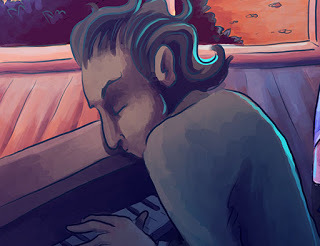 Hardy uses the revelation of Aeneas Manston's married status as an ironic opportunity to rehabilitate his character in the eyes of the reader. He doesn't struggle against his regrettable fate of being married to someone he does not love but, instead, works diligently to make his home ready for her. His failure to meet her at the right time is chalked up to a genuine misunderstanding.
Hardy uses the revelation of Aeneas Manston's married status as an ironic opportunity to rehabilitate his character in the eyes of the reader. He doesn't struggle against his regrettable fate of being married to someone he does not love but, instead, works diligently to make his home ready for her. His failure to meet her at the right time is chalked up to a genuine misunderstanding.In fact, Hardy draws a couple of new parallels between Manston and Edward Springrove that invite us to question if Cytherea's heart is unfairly biased towards the latter. Manston's unfortunate marriage calls to mind something Owen Graye says about Springrove earlier in the book, describing him as "an impulsive fellow who has been made to pay the penalty of his rashness in some love affair." Later, as Manston arrives in town, he sees Springrove for the first time, noting that "[b]ut for my wife, Springrove might have been my rival." Both are architects and their shared affection for Cytherea draws a clear line between them.
So it is a wicked trick Hardy plays in burning down the Carriford inn with the wayward Mrs. Manston inside. Upon this hinge, the two men's fortunes reverse.
Aeneas Manston is set free of his social obligation to his wife upon her death. His designs to woo Cytherea Graye had been brought to a grinding halt by the revelation that he was already married. This doesn't improve Cytherea's own social instability, as she remains reliant upon the capricious grace of Miss Aldclyffe as her employer but, at least, retaining that favor is no longer dependent on her reciprocating affection to the obviously smitten Manston. With the spectre of his wife's return banished, he is also free to retrain his sights on wearing down Cytherea's resolve.
The inn's destruction lands heavily on the Springrove family. The tenements, including the inn, were leased to Farmer Springrove along with the responsibility for having them restored. This debt, subtly enforced to Manston's benefit, threatens to send the family into a social chasm and pushes Edward out of the picture while Manston restarts his campaign to win Cytherea as his wife.
When Owen falls ill, Manston befriends and supports him. This proves to be the final point of leverage necessary to erode Cytherea's resistance to marrying a man that she does not love. Finally, the day arrives and the pair are married at Knapwater House. During the ceremony, Cytherea sees a grief-stricken Edward and all of her reservations about marrying Manston are confirmed. Though the ill-fated pair do manage a dramatic reunion far from the sight of others where miscommunications can be clarified, Cytherea is now married and they part with their love acknowledged but forever unconsummated.
This business of consummation becomes a suddenly important one as Cytherea and Manston leave for their honeymoon. It is revealed by a dying man that he saw the original Mrs. Manston after the inn had burned down, suggesting that she was, in fact, alive. Edward and Owen rush to the hotel where Cytherea and Manston are about to consummate their marriage and arrive just in time to stop them from doing so. This sets up the status quo for the remainder of the book, with Cytherea legally married to a man she doesn't love and spared from his touch only by the existence of a second Mrs. Manston.
This is also the section where Desperate Remedies abandons its pretenses of being a social novel and plunges into reversal after reversal to sell its pivot to the suspenseful.
Published on May 30, 2016 20:10
May 22, 2016
Desperate Remedies Part 4 - The Wedding March
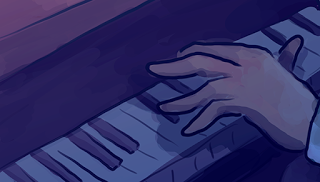 Hardy takes the first third of the book to erect and clarify the social lattice upon which his characters hang. Beginning in the eighth section, he sows the elements of suspense that will germinate in its middle third and blossom in the conclusion.
Hardy takes the first third of the book to erect and clarify the social lattice upon which his characters hang. Beginning in the eighth section, he sows the elements of suspense that will germinate in its middle third and blossom in the conclusion.Miss Aldclyffe, upon confirming Edward Springrove (her neighbor's son) as Cytherea's estranged love, advertises for a steward to manage the land associated with Knapwater House. After rejecting a number of suitable applicants, she casts her nets of inquiry ever wider until, at last, she finds a candidate who suits her enigmatic requirements.
Enter Aeneas Manston.
Hardy introduces Manston with considerable fanfare. He is first "seen" by the reader when Miss Aldclyffe sends Cytherea to Manston's somewhat dilapidated house on the property in order to collect his dues for a social society. She encounters him just after having learned of Edward's betrothal to his cousin and is vulnerable. Hardy paints his physical description with the same vigor as he would one of his heroines:
He was an extremely handsome man, well-formed, and well-dressed...There was not a blemish or a speck of any kind to mar the smoothness of [his complexion] or the beauty of its hue. Next, his forehead was square and broad, his brows straight and firm, his eyes penetrating and clear...Eyes and forehead both would have expressed keenness of intellect too severely to be pleasing, had their force not been counteracted by the lines and tone of the lips. These were full and luscious to a surprising degree, possessing a woman-like softness of curve, and a ruby redness so intense, as to testify strongly to much susceptibility that might require all the ballast of brain with which he had previously been credited to confine within normal channels.
His manner was rather elegant than good: his speech well-finished and unconstrained.
Hardy brings his best descriptive tools to bear on making a memorable first impression, setting the stage at dusk as rain begins to fall heavily. Cytherea is urged by the inclement weather into the house where Manston plays dramatic music on his organ (I can't make this stuff up) as lightning flashes in the raging storm outside an oversized window that dominates the room. She leaves the encounter somewhat intrigued by him but he, of course, falls madly in love with her.
The middle section of the novel is taken up by an inexorable march towards a marriage between Cytherea and Manston and begins to take on more qualities of a suspense novel at the expense of its social elements. Twists in the plot cease to work in service to the social anxieties and more in that of heightening the tension (and delaying the arrival) of that certain-to-be unhappy union. Cytherea, despite Edward Springrove's absence from her life, continues to nurture her love for him even as her dependency shifts from Miss Aldclyffe to that of her unwelcome suitor. His interest in her is succinctly laid out in a passage where he describes her as, "a lady's dependent, a waif, a helpless thing entirely at the mercy of the world; yes, curse it; that is just why it is; that fact of her being so helpless against the blows of circumstances which renders her so deliciously sweet."
Cytherea is granted a surprise reprieve from Manston's persistent affections when Miss Aldclyffe discovers that he is already married, by his own admission, to an actress he'd met in Liverpool ("an American by birth") and from whom he'd tried to estrange himself in taking the position as steward. He is allowed to keep his job if he will move his wife into the old manor home with him. He sends for the wayward Mrs. Manston, whom he admittedly does not love, to meet him. When he doesn't meet her at the train station at the appointed time, she travels to the nearby village of Carriford and takes overnight lodging at the inn, owned by Edward Springrove's father.
The inn burns down and, it is presumed, takes Mrs. Manston with it.
Published on May 22, 2016 07:45
Rob Vollmar's Blog
- Rob Vollmar's profile
- 15 followers
Rob Vollmar isn't a Goodreads Author
(yet),
but they
do have a blog,
so here are some recent posts imported from
their feed.



